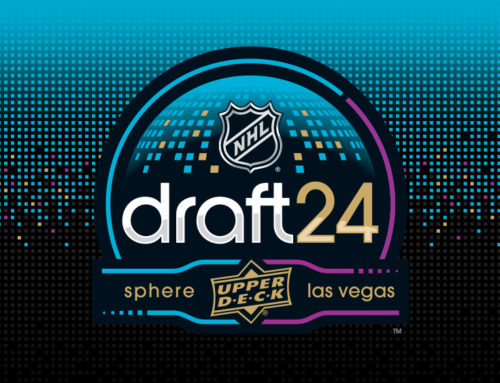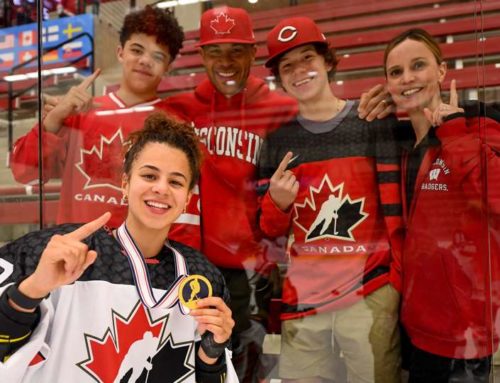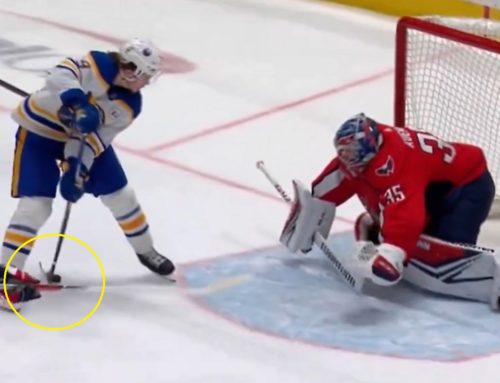Explanation of “Outlook”
admin
2011-12-13
The Outlook grading system is designed to give you a ballpark idea of the quality of prospect you have for a deep keeper league. It is not a reflection of their “real” NHL-caliber skills, but instead it is a delicate balance of upside, NHL-readiness and the certainty that the player will achieve fantasy-worthy numbers as opposed to a lesser role on a less-desirable line.
A+: The prospect has great upside, is almost certain to not only make the NHL, but flourish in a top role. He will be in the NHL within two years and will make his impact early. Most likely, he will be found in the Top 20 in the Dobber Prospect Rankings (forwards) and Top 5 (defensemen).
A: The prospect either has great upside, but not as certain as A+, or he has very good upside and very high certainty. Most likely he will be found in the Top 40 in the Dobber Prospect Rankings (forwards) or Top 10 (defensemen).{source}
<div id=”imageright”><script type=”text/javascript” src=”http://ap.lijit.com/www/delivery/fpi.js?z=199099&u=dobbersports&width=300&height=250″></script></div>
{/source}
A-: A slightly lesser combination of upside vs. certainty that you find with A prospects. These players will most likely be found in the Top 60 in the Dobber Prospect Rankings (forwards) or Top 20 (defensemen).
B+: These prospects can have great upside, but carry some risk. These prospects can also have lesser upside and carry very little risk. Top 80 in the Dobber Prospect Rankings (forwards) or Top 25 (defensemen).
B: As with B+, except it is looking as though these prospects are a little further off. So the wait on them will be longer. Top 100 in the Dobber Prospect Rankings (forwards) or Top 30 (defensemen).
B-: At this point, any prospects with high-end upside are either quite risky or the wait is upwards of three years or more. Often a B- will indicate a modest upside of the mid-60s, be two years away and have reasonable certainty of making it. Top 120 in the Dobber Prospect Rankings (forwards) or Top 35 (defensemen).
C+: Top 150 in the Dobber Prospect Rankings (forwards) or Top 40 (defensemen).
C: Top 200 in the Dobber Prospect Rankings (forwards) or Top 50 (defensemen).
C-: Top 250 in the Dobber Prospect Rankings (forwards) or Top 60 (defensemen).
D+: Top 300 in the Dobber Prospect Rankings (forwards) or Top 70 (defensemen).
D: Top 350 in the Dobber Prospect Rankings (forwards) or Top 90 (defensemen).
D-: Often, this area is filled with either (a) 18-year-olds who were drafted late and are considered “projects”, (b) prospects who are in the KHL/Europe and unlikely to come over, or (c) 25-year-olds who have yet to really get a sniff of the Show and probably won’t. In the case of the “projects”, the wait will be at least five or six years unless they make huge strides one year, in which case we would obviously bump up the fantasy grade. Top 400 in the Dobber Prospect Rankings (forwards) or Top 110 (defensemen).
E: Barely on the radar, but worth a mention because you never know. For example, defenseman Jason Garrison was an E back in 2008 – undrafted, 25 years old, with numbers at other levels that were not exactly Earth shattering. But he then kicked off the 2011-12 NHL season with nine goals in his first 28 games. Top 700 in the Dobber Prospect Rankings (forwards) or Top 200 (defensemen). Jeff Hamilton is another example – he was 29 before he played his first full NHL season and he scored 18 goals that year (2006-07)






